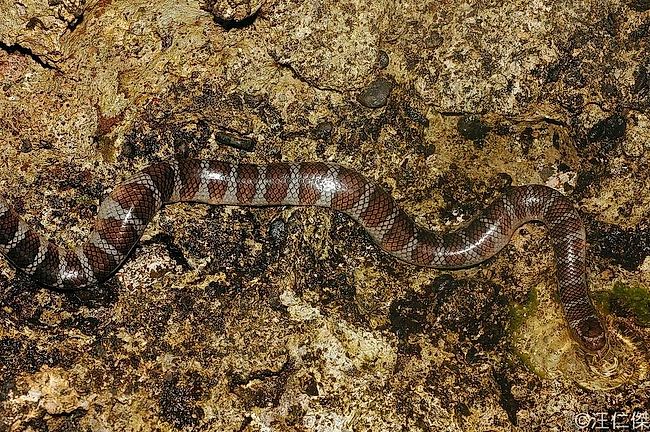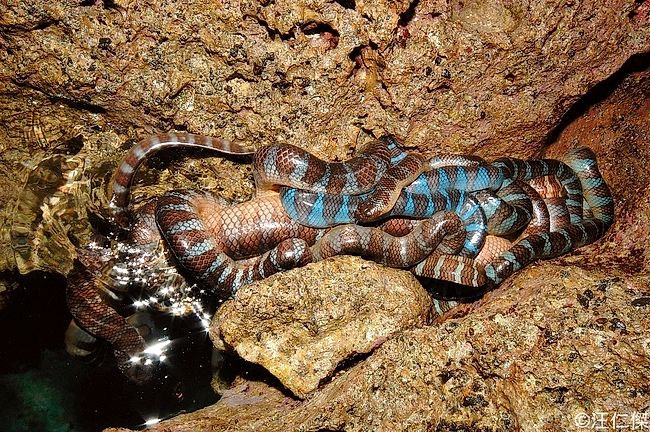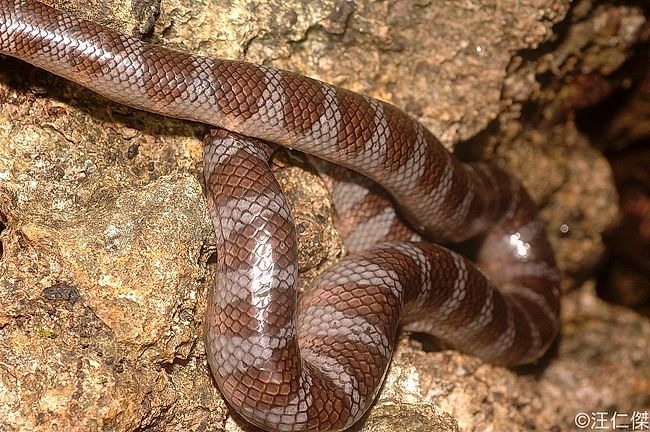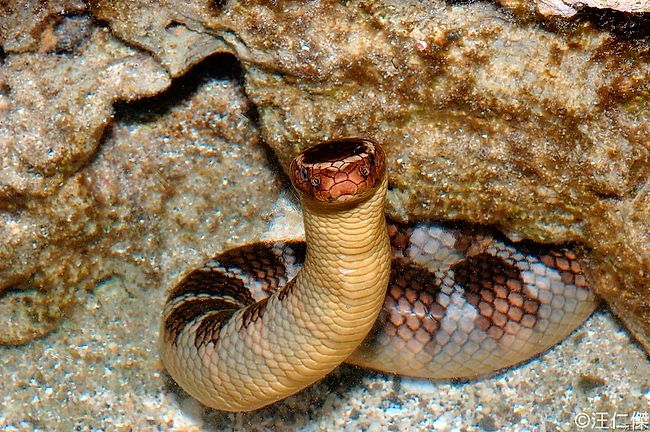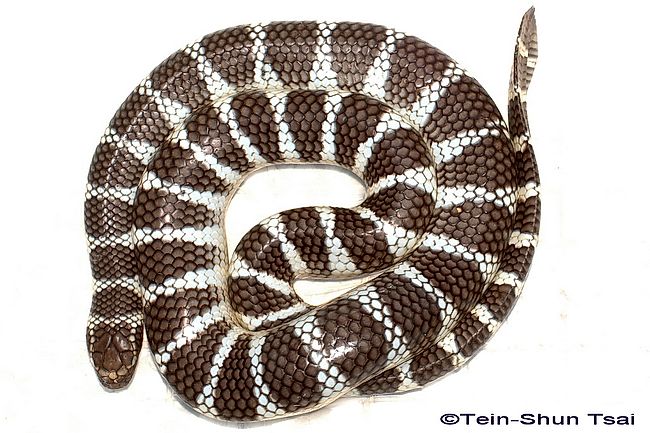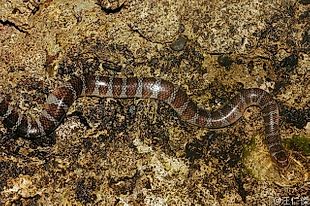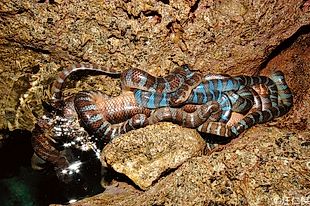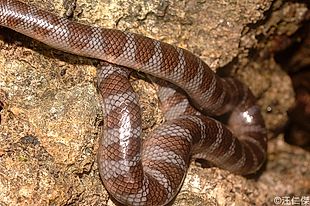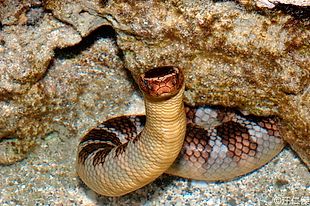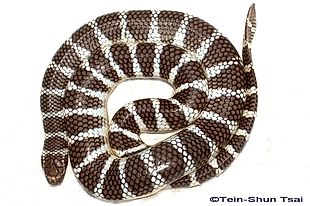Laticauda semifasciata
Black-banded Sea Krait
闊帶清斑海蛇 (kuo4dai4qing1ban1hai3she2)
Status: Not protected
HIGHLY VENOMOUS!
Family
Elapidae, subfamily Hydrophiidae
Max. length
170 cm
Occurrence in Taiwan
Along the coast of eastern Taiwan, especially in Orchid Island, occasionally in Kenting.
Global Distribution
China, Taiwan, Philippines, Japan (Ryukyu Islands), Indonesia, Philippines and Moluccas, West Pacific Ocean from Japan in the north to Samoa in the south.
Description
Medium to large snake; total length up to 170 cm. There are 19-23 (23 at mid-body) rows of smooth and glossy scales. Head is broadly triangular, flattened on top, but not distinct from neck; body is stout or heavy, soft and flabby, and moderately compressed laterally in posterior quarter; tail is laterally compressed, sides with vertically elongated scales. The ventrals are medium size, which is one-third to more than half the width of body. Eye is medium-sized; iris is dark brown to black and pupil is round, black, indistinct. Tongue is red to purple, with outer half of fork tips white. Fangs are medium size, rigid, in anterior part of upper jaw. There are 2 rostrals, 3 prefrontals, and no loreals. Upper head is brown to olive black, frequently tinged with blue, and usually with a broad band of lighter color across head anterior to eyes. Some individuals also have a lighter band across posterior part and extending down side of head, connected with narrow band directed posteriorly from eye. Upper body and tail are brown to gray brown, or gray black, frequently tinged with blue; dark individuals have diffuse black pigment on scales, the pigment may be condensed to form dark margins on some scales. Body and tail bands are variable in prominence; the dark bands on body are broadest at the vertebral line, tapered off laterally (diamond shape from dorsal view) and may continue onto ventral body. Ventral head is yellow to yellow gray, tinged with medium black. Ventral body is yellow gray to blue gray; the color is uniform or with vague bands. The ventral scales are narrower than body width, especially in anterior body; scales on posterior half to two-thirds of body are with mid ventral keel of dividing line; scales on posterior one-third of body are notched in central region of posterior margin. Anal scale is divided and subcaudals are paired.
Biology & Ecology
This cathemeral (diurnal or nocturnal) snake is the thickest species in the genus and usually found on coral reefs and rocky areas along the sea coast where the snakes gather in mating balls during mating season. Females lay eggs in summer and fall. Females produce 1-8 eggs of approximately 8.7x3.4 cm per clutch; hatchlings measure 35-52 cm in total length. The snout-vent length of smallest mature female and male is 80 and 70 cm, respectively. It feeds on coral fish.
Laticauda semifasciata is one of world's most venomous snake species, however due to their inoffensive, docile nature they seldom bite, even in self defense.
Etymology
Laticauda (from the Latin latus = broad, and cauda, tail, in reference to the wide, flat tail) is a genus of sea snakes. P. semifasciata used to be classified in this genus, however, a revision by V. E. Kharin in 2005 moved it into the genus Pseudolaticauda, which means "false laticauda";
semifasciata = from Latin semi = half, and fasciatus = banded; in reference to the half-banded pattern.
The Chinese name 闊帶清斑海蛇 (kuo4dai4qing1ban1hai3she2) means "Broad-Banded (闊帶) White-Striped (青斑) Sea Snake (海蛇)".
Further Info





